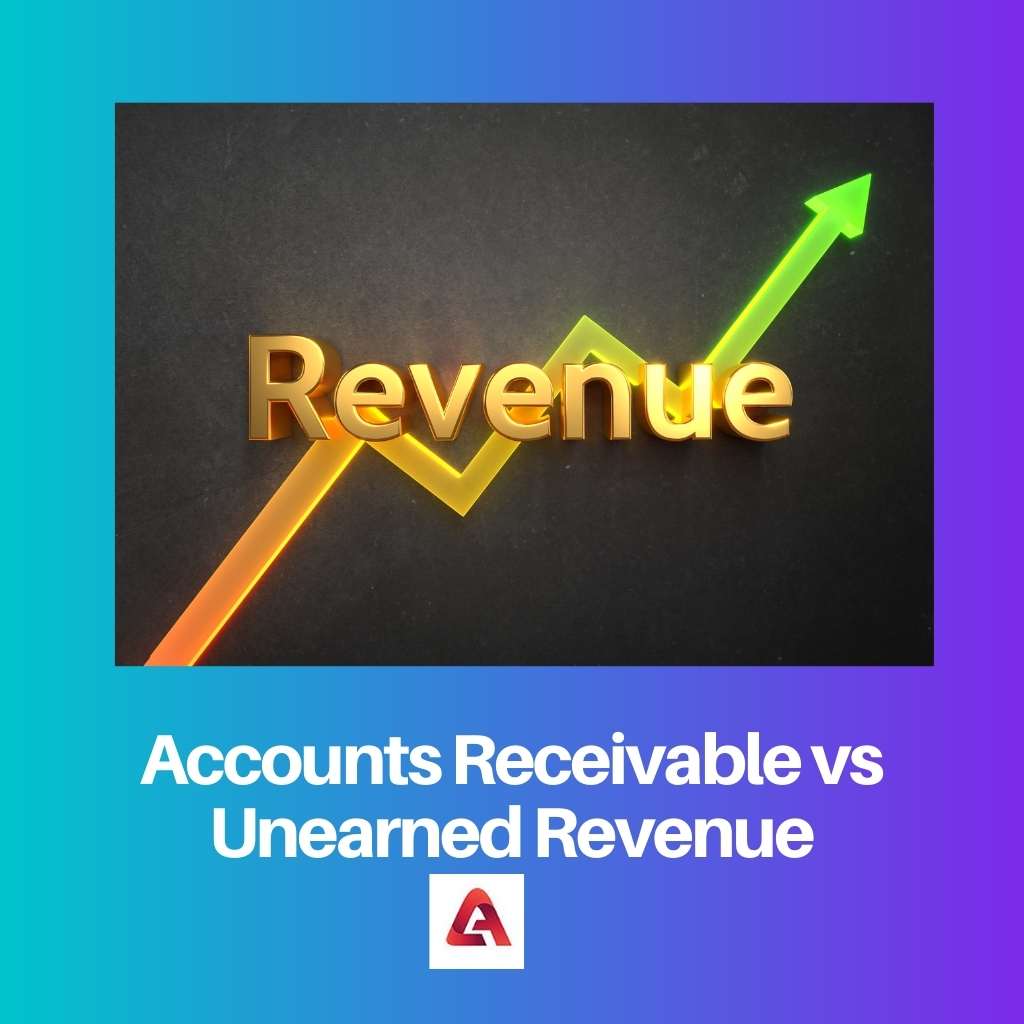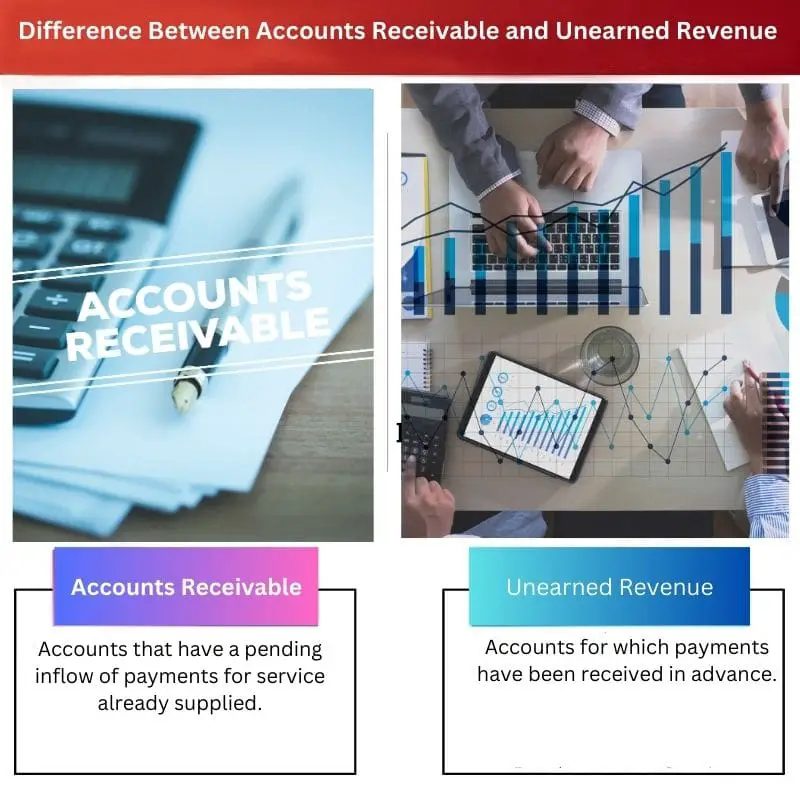Accounting in modern times is done based on the accrual concept of accounting which states that revenue can be recorded earlier than it is received and similarly expenses can be recorded before they actually become due.
Accounts Receivable and Unearned Revenue are two accounts that are accrued.
Key Takeaways
- Accounts receivable represents the money owed to a company for goods or services already provided. In contrast, unearned revenue represents the money received in advance for goods or services not yet delivered.
- Accounts receivable is an asset on a company’s balance sheet, whereas unearned revenue is a liability.
- Companies record accounts receivable when they provide goods or services on credit, whereas unearned revenue is recorded when they receive payments before delivering goods or services.
Accounts Receivable vs Unearned Revenue
The difference between Accounts Receivable and Unearned Revenue is that in the case of Accounts Receivable, work has already been done and the payment is yet to be received whereas, in the case of Unearned Revenue, payment for agreed-upon work has been received in advance whereas work is yet to be done.

Accounts Receivable, for a firm, is the balance of all the payments that are due to a firm for credit sales or services rendered by the firm in advance.
It is a liquid asset for the firm. These outstanding invoices are meant to be paid within a short period of time, normally within the same accounting year.
Unearned Revenue refers to receipts made for work that is pending or goods that have yet to be delivered. This creates a liability for the firm equal to the revenue received until the work is delivered.
It is treated as a current liability and has to be paid in the current accounting period.
Comparison Table
| Parameters of Comparison | Accounts Receivable | Unearned Revenue |
|---|---|---|
| Meaning | Accounts that have a pending inflow of payments for service already supplied. | Accounts for which payments have been received in advance. |
| Nature | Accounts receivable is an asset to a firm as it is proof of future income. | Unearned Revenue is a liability for a firm as it is proof of future work. |
| Treatment | It is recorded under current assets in the balance sheet of the firm. | It is recorded in the balance sheet and when work is supplied, it is recorded in the income statement. |
| Examples | Credit sales invoices and EMI’s are examples of accounts receivables. | Advances and prepaid rent for the landlord are examples of Unearned Revenue. |
| Benefits | It adds to the liquidity of a firm and increases valuation. | It increases the cash flows to a company that can be used for day-to-day activities. |
What is Accounts Receivable?
Accounts receivable refers to the accounts on which a firm is yet to receive payments for which it has supplied goods and services or done the work as was agreed upon by the payer.
They are current assets for the firm because the firm will receive money for balancing these accounts.
Accounts Receivable turnover ratio is an important tool used by firms to calculate and present their financial position to shareholders and other interested parties and it is ascertained by dividing net sales by average accounts receivables amount.
Accounts Receivable is an important aspect of a functioning firm as not a lot of payments are done immediately but the firm cannot afford to lose important clients who are willing to pay their dues later.
It is a legal compulsion for customers who have purchased or acquired service on credit to pay off their dues which until then are recorded in accounts receivable.
If the payment is received on time, it is transferred to the income statement otherwise, it is transferred to bad debts account.
Subscriptions offered, EMI and credit sales made, and assets offered on rent are examples of accounts receivables. They are disclosed at the end of the year, along with the overall financial position of a firm.
What is Unearned Revenue?
Unearned Revenue, as the name suggests, is revenue recorded for which work is still to be supplied. Payments to a firm or an individual are made because of an exchange of value.
One party provides goods or services that the other party needs and prices are agreed upon which are paid to the doer.
Sometimes, these payments might not be made in the present time but agreed to be done in advance to the work, these are recorded under unearned revenue.
Unearned revenue represents receipt in advance but it is still a liability for a firm as now it has a legal obligation to carry out the duty that it had promised to do.
On the other hand, it is beneficial to the firm as the money that has been received in advance can be used to further the interests of the firm which require money.
Unearned revenue is also called deferred revenue because even though the payments have been received, it becomes revenue in pure accounting terms in the future upon completion of a contract, the time at which it is recorded in the income statement.
Subscription services, pre-booking deals, rent received in advance, etc are some examples of unearned revenue for an accounting entity.
Main Differences Between Accounts Receivable and Unearned Revenue
- Accounts Receivable is a current asset whereas Unearned Revenue is a current liability for a firm.
- Accounts Receivable is created because goods have been supplied or work has been done, whereas unearned revenue is created for advanced income for which work has not been done.
- Accounts Receivable is recorded in a cash flow statement whereas unearned revenue is transferred to an income statement.
- An increase in Accounts Receivables reduces the accounts receivable turnover ratio whereas unearned revenue decreases the working capital of a firm.
- Companies are profit-oriented enterprises therefore unearned revenue accounts are more readily made than accounts receivables, which have a risk of defaulting.





